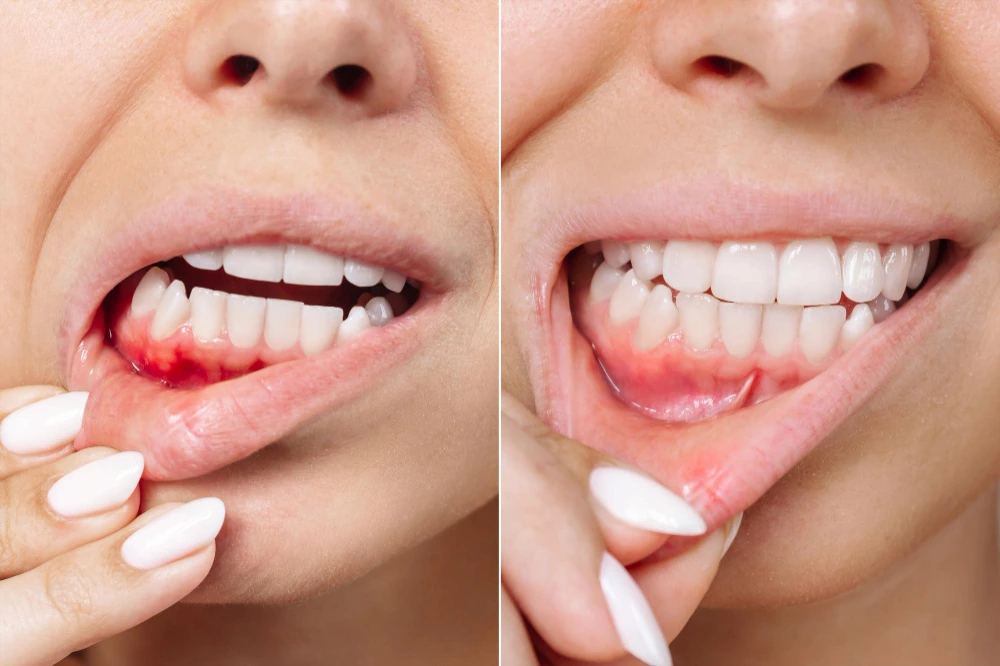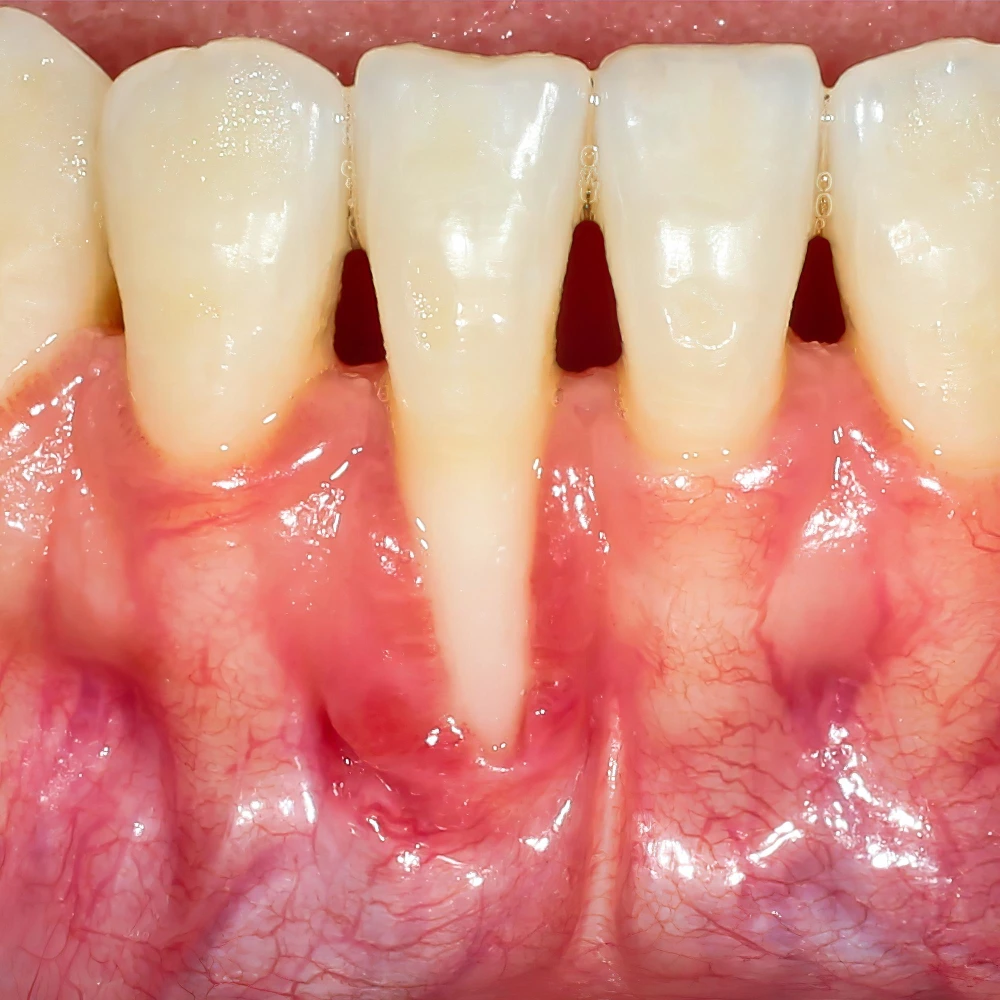Click to call
Dental Myth 9: Bleeding Gums Are Normal?" - Don't Brush Off This Dental Red Flag!
We’ve all experienced it at some point – a little pink tinge in the sink after brushing or flossing. Many of us brush it off, assuming it’s just a minor irritation or a sign of brushing too hard. However, the truth is that bleeding gums are far from normal and can signal a range of underlying health issues, both oral and systemic. Let’s delve deeper into this common misconception and understand why bleeding gums should never be ignored.

The Gums: Your Mouth’s Protective Barrier
Your gums play a vital role in protecting your teeth and supporting their structure. Healthy gums are firm, pink, and fit snugly around your teeth. When they bleed, it’s a sign that something is amiss.
Stages of Gum Disease
-
Gingivitis: This is the early stage of gum disease, characterized by red, swollen, and bleeding gums. With proper oral hygiene and professional cleaning, gingivitis can often be reversed.
-
Periodontitis: If gingivitis is left untreated, it can progress to periodontitis. In this stage, the gums pull away from the teeth, forming pockets that become infected. This can lead to bone and tissue loss, eventually causing teeth to loosen and fall out.

Beyond Gum Disease: Other Causes of Bleeding Gums
While gum disease is the most common culprit, several other factors can contribute to bleeding gums:
- Poor oral hygiene: Inadequate brushing and flossing allow plaque to accumulate, irritating the gums and causing them to bleed.
- Aggressive brushing or flossing: Using too much force or incorrect technique can injure your gums, leading to bleeding.
- Hormonal changes: Fluctuations in hormone levels during puberty, pregnancy, and menopause can make gums more sensitive and prone to bleeding.
- Certain medications: Blood thinners, aspirin, and some heart medications can increase the risk of bleeding gums.
- Nutritional deficiencies: Deficiencies in vitamin C and K can impair gum health and increase the risk of bleeding.
- Systemic conditions: Certain medical conditions like diabetes, leukemia, and HIV/AIDS can weaken the immune system and increase the risk of gum disease and bleeding gums.

The Link Between Oral and Overall Health
Research has shown a strong connection between oral health and overall health. Gum disease has been linked to various systemic conditions, including:
- Heart disease: Bacteria from gum disease can enter the bloodstream and contribute to the buildup of plaque in the arteries, increasing the risk of heart attack and stroke.
- Diabetes: People with diabetes are more susceptible to gum disease, and gum disease can make it harder to control blood sugar levels.
- Respiratory problems: Bacteria from the mouth can be inhaled into the lungs, potentially causing or worsening respiratory infections.
- Pregnancy complications: Gum disease in pregnant women has been associated with premature birth and low birth weight.

What to Do if Your Gums Bleed
If you experience bleeding gums, it’s important to see your dentist promptly. They will assess your oral health, identify the underlying cause of the bleeding, and recommend appropriate treatment.
Prevention is Key
The good news is that bleeding gums can often be prevented with proper oral hygiene practices:
- Brush your teeth twice a day with a soft-bristled toothbrush and fluoride toothpaste.
- Floss daily to remove plaque from between your teeth. 1. imammi.comimammi.com
- Use an antimicrobial mouthwash to reduce bacteria.
- Visit your dentist for regular checkups and cleanings.
- Eat a healthy diet and avoid smoking.
Remember, your gums are a vital part of your oral health. Don’t ignore bleeding gums. By taking proactive steps to maintain good oral hygiene and seeking professional care when needed, you can protect your gums, teeth, and overall health.
